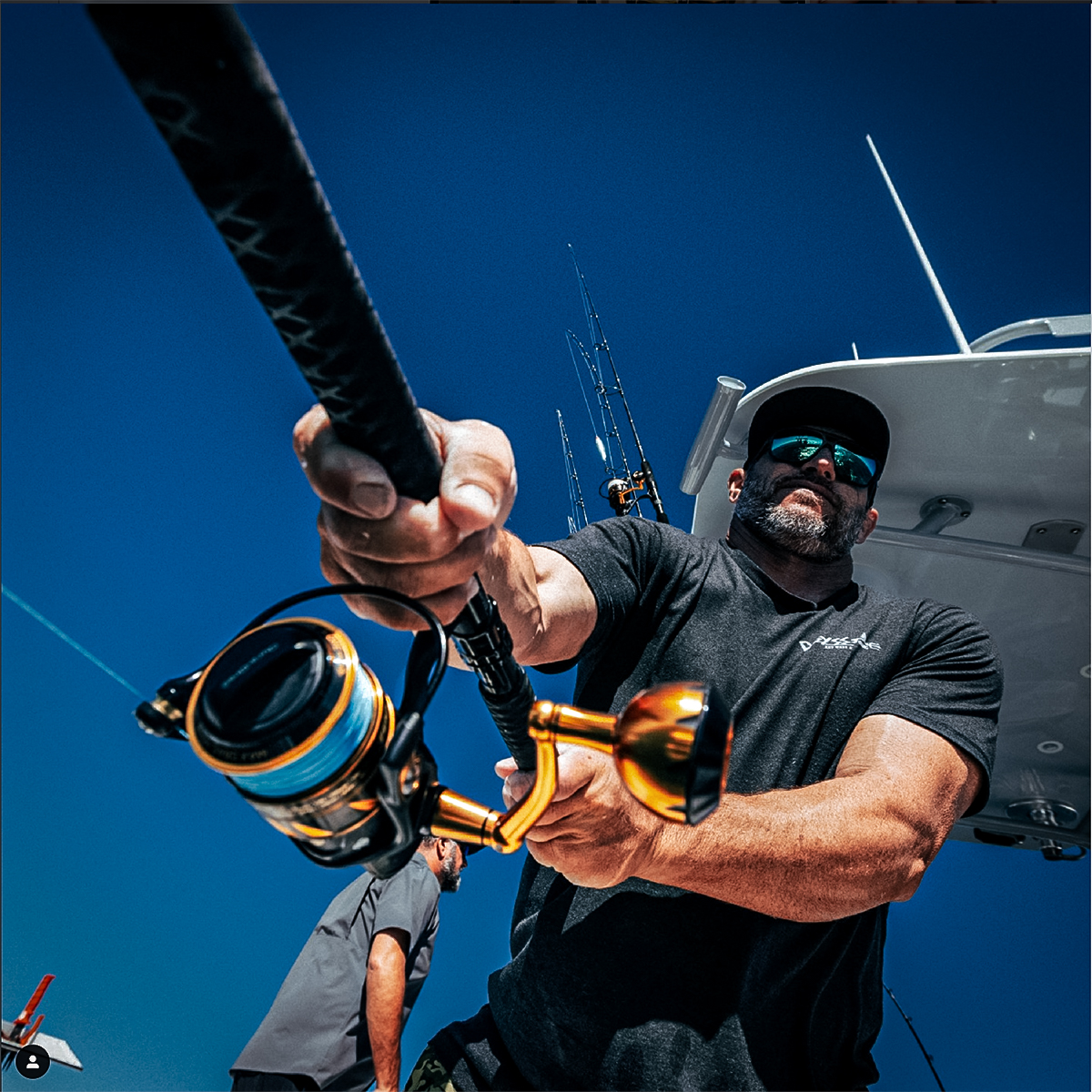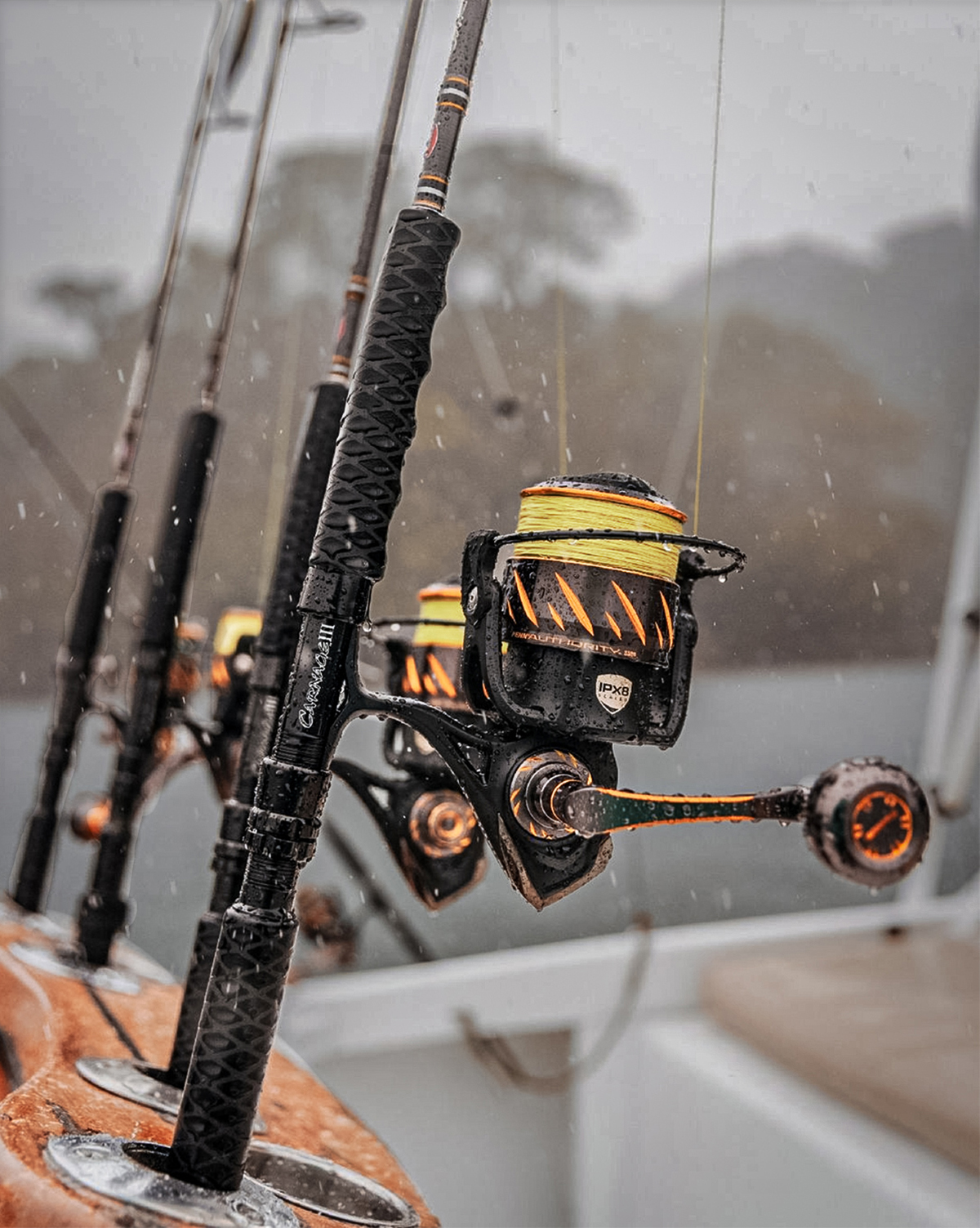I first used a Penn reel while fishing for flounder with my dad and our friends in Big Assawoman Bay. As a 10-year-old, I had no idea where the reel was made or what its history was. I just knew it worked smoothly and enabled me to catch a bunch of flounder, including two the size of doormats. More importantly, it was part of an experience that produced a memory that still makes me smile. But note, I do remember what kind of reel got the job done. Good gear, like Penn fishing reels, has a way of standing out.

A Humble Beginning
Anglers ask, “Are Penn reels still made in the U.S.A.?” The short answer is: Three models are, and the rest are made in China. But the short answer is never the whole story, and truth be told, the whole story is more interesting.
The origin story of the Penn Fishing Tackle Company is a classic example of the 20th-century “American Dream” come true. In 1922, 25-year-old Otto Henze left his home in Germany and moved to the United States. He landed in Philadelphia, as many did, where he began work as a machinist for the Ocean City Reels Company of Philadelphia. But Henze had ideas of his own.

In 1932, 10 years after his arrival in the United States, Henze started Penn Fishing Tackle Manufacturing Company. Henze first set up shop in a rented third-floor loft at 492 North Third Street in Philadelphia. Early the following year, the company made its first recorded sale to the Miller Auto Supply Company of Harrisburg, Pennsylvania.
Miller purchased one of each Penn reel available at the time — a Sea Hawk, a Bayside, and a Long Beach. The Long Beach was the most expensive at $2.48. Henze and Penn were in business.
Though they began operations in the thick of the Great Depression, Henze was able to price his reels lower than the competition due to his innovative designs and manufacturing techniques. He recognized the general popularity of angling and made the most of it by providing affordable tackle.
From the beginning, Henze also understood the importance of customer service. This quickly became a cornerstone of Penn’s reputation among the company’s rapidly expanding clientele.
In 1935, Henze married Martha Haecker. Unbeknownst to both, this would have a dramatic impact on Otto’s business.

Penn Fishing Tackle enjoyed continued success through the 1930s. One of the company’s most famous reels, the Senator, was introduced in 1936. This reel revolutionized big-game fishing by providing anglers with a reel capable of withstanding the power and speed of pelagic monsters.
This connection with saltwater fishing drove Penn’s success. The saltwater environment and the power of the fish are unrivaled — Penn realized this and began to produce reels that could stand up to the punishment.
But, with the attack at Pearl Harbor on Dec. 7, 1941, America went to war, and, like many other American manufacturers, so did Penn.
According to an oral history interview Otto’s son Herbert Henze gave to the East Falls Historical Society, many of the Penn employees joined the armed services and a portion of Penn’s manufacturing facilities was redirected for wartime production.

Construction of new reels ceased because the materials were needed for the wartime effort. To show that they had not forgotten their customers, Penn encouraged them to take care of their existing tackle and offered a free tube of reel lubricant to any who wrote and requested one.
RELATED – Luke McFadden: A Young Crabber on the Cutthroat Chesapeake
Martha Henze: The First Lady of Penn Fishing Reels
After the Depression and the end of WWII, Americans began to experience more widespread affluence and more leisure time with the post-war upturn in the economy of the late 1940s and 1950s. Fishing became more popular than ever, and Penn was there to outfit new anglers.
Beach or surf fishing became popular, and whether on the East, West, or Gulf Coast, surf anglers could be found using the popular Penn Squidder surf-casting reel.
“Party boat fishing” in coastal communities within driving distance of major cities also became popular. Many of these party boats were stocked with rods outfitted with Penn Senator reels. Since the party boats provided equipment and bait as part of the experience, the working class suddenly had an affordable way to experience deep-sea fishing for fun, food, and sport.

In 1948, Otto Henze died unexpectedly. In short order, his wife, Martha, did something uncommon — she decided to step in and run the company.
Her bold and adventurous spirit carried over from business to angling. She traveled widely and fished numerous big-game hotspots. According to the company history, she caught a 613-pound Bluefin Tuna in Nova Scotia in 1951. Through the years, pictures of her and other women anglers often graced the Penn catalog.
During her tenure as company president, Penn shifted gears from an established American company to a respected international fishing brand. According to the interview with Martha’s son Herbert, Penn sold its reels in England, Sweden, Norway, Denmark, France, South Africa, Australia, and New Zealand.

By 1959, the company was manufacturing 77 different models, and in 1962, it introduced its first spinning reel, the Spinfisher 700. Spinning reels were simple to use and made life easier for newcomers to the sport of saltwater fishing.
Martha remained at the head of the company until 1963 when Herbert became the company president. But she didn’t step away. Instead, she became chairwoman of the board and continued her service to the family company until she retired from this position in 1977.
There’s lots of interesting gear-nerd historical timeline points noted in Penn’s company history, but here’s my personal favorite. In 1979, Frank Mundus caught the largest Mako shark ever on rod and reel, weighing 1,080 pounds. Mundus was the inspiration for Robert Shaw’s character, Quint, in the film Jaws (1975). In the movie, Quint used a Penn Senator 16/0 reel on his Fenwick Big Game rod during the famous fighting harness scene.

RELATED – Roosterfish: Get Tropical and Be Ready for a Fight
The Only Constant in Life is Change
Herbert Henze continued at the helm of Penn until he retired in 2003.
Shortly thereafter, the family-owned business that grew from that first rented loft at 492 North Third Street in Philadelphia was sold. Thus began the now common process of one company acquiring another and then in turn being acquired by yet another larger company.
The most recent chapter of that story occurred in January 2019, when Newell Brands sold Penn Reels, together with other associated companies that formed the Pure Fishing brand, to Sycamore Partners. As of 2023, Pure Fishing remains the parent brand for Penn Fishing.

And yes, the vast majority of more than 200 models of Penn Reels, are now manufactured in overseas facilities. However, the overall quality remains good. At ICAST 2022, the new Penn Authority won the New Product Showcase Best-in-Class for saltwater fishing reels. After 90 years, the company is still making quality fishing reels that get it done. In fact, anglers using a Penn reel have set more than 1,400 International Game Fish Association (IGFA) world records.
Despite the changes in ownership, Penn still has three models — the Senator, the International Series, and the Z Series — that are manufactured in the U.S.A.

Penn Fishing Reels: 90 Years and Still Fishing
I get it. We Americans like reels that are made in America.
As consumers, it comes down to this: Either we consume without question, or we ask questions about the things we consume. This idea has wide-ranging applications in a day and age when voting with our dollars is often one of the most effective ways to “be heard” in an ever-changing world. I think this idea applies to our fishing equipment as much as it does to anything else we purchase.
Penn reels are still designed by anglers for anglers. Most of them are built overseas or assembled in the United States with parts manufactured elsewhere. If you’d prefer to fish a Penn reel whose origin story began in Philadelphia, you can still find them for sale. A benefit of quality fishing tackle is that, with a little maintenance, it can often outlast its owner.

Otto Henze was a German immigrant who got out of Germany before the Nazis came to power. He landed in the United States, seeking the American dream and built a company that made some of the best early modern fishing reels in the country.
His wife, Martha, and son, Herbert, carried on his legacy, brought Penn into the 21st century, and continued to serve the worldwide angling community. Pure Fishing seems to be following suit. For 90 years, Penn reels have been a part of the proverbial fishing story for legions of anglers pursuing their passion for chasing fish.
READ NEXT – Why Your Fishing Reel Gear Ratio Matters










Comments